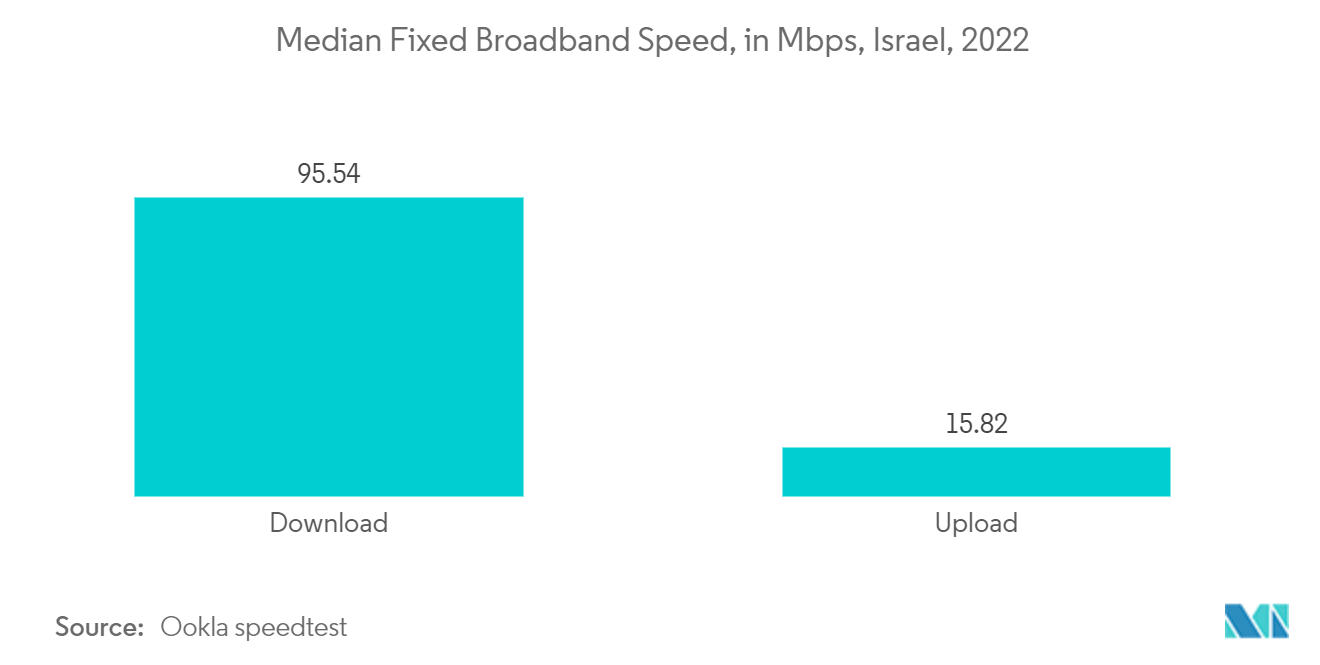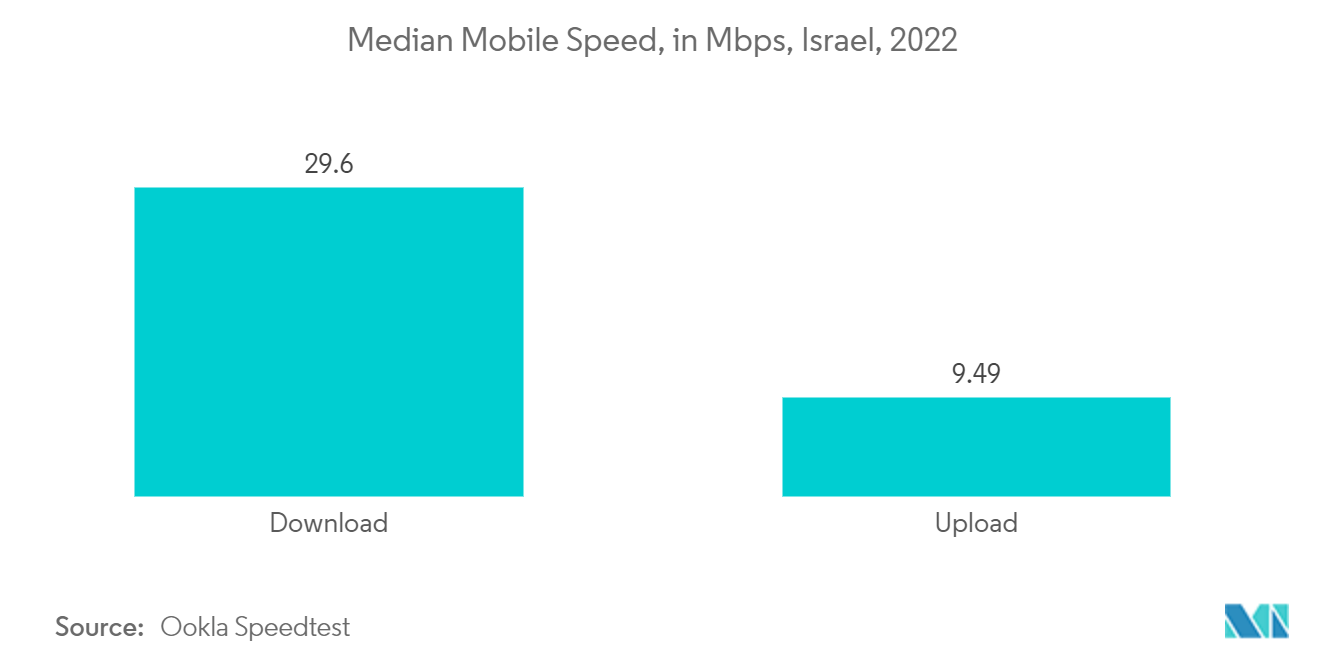Market Trends of Israel Telecom Industry
This section covers the major market trends shaping the Israel Telecom Market according to our research experts:
Rising demand for fixed broadband services
- Key players in the telecom market are focused on expanding their broadband portfolio. For instance, Bezeq launched the latest model known as Be router Be Fibe. This new device facilitates broadband speed at 2.5 Gbps and supports the connection of 128 devices in parallel. The router is being provided to customers on a rental basis at the cost of USD 5.79 dollars per month.
- Increasing penetration of internet services through wireless mode and the copper cables network is expected to be replaced by fiber-based cables in the coming years. For instance, Israel's Ministry of Communications (MoC) introduced policy principles related to the switch-off of copper infrastructure. Instead of copper-based services fiber based cables need to be deployed.
- The demand for deploying fiber broadband services is growing. For instance, Israel Broadband Company (IBC). Bezeq and HOT offer fixed broadband services to 99% of all households. Such initiatives are expected to drive growth in fixed broadband services over the next five years.
- In coming years, most of the investment in the telecom sector would be focussed on deploying fiber-based broadband services in rural and urban areas. For instance, Bezeq saw a rapid increase in fiber-based subscriptions, up to 161,000 in the mid-current year. The customers will slowly migrate to high-speed connectivity (fiber-based broadband services), thus creating new growth opportunities for the telecom market.
- According to the Ookla Speedtest Global Index, Israel ranked 33rd with a median fixed broadband download speed of 95.54 Mbps in October this year. Fixed broadband services penetration is growing significantly and thus increasing the demand for high-speed wireless services.

Rising demand for OTT services
- PayTV penetration in Israel is expected to decrease over the next five years due to subscription loss across cable and DTH segments with the growing popularity of OTT (over-the-top) video services in the country. For instance, Yes Tv is Israel's most significant streaming service that, includes 140 channels and a VOD service including Disney+ and Netflix.
- Telecom service revenues increased as users mainly adopted work-from-home practices and spent more time streaming video on OTT platforms, games, and other forms of entertainment during the COVID-19 lockdown. For instance, Free TV is expected to be launched by the end of this year, which offers the next generation of OTT-based TV platforms in Israel.
- OTT service providers such as Netflix and Prime Video will further create new growth opportunities for the telecom market. Adoption of video streaming platforms boosted by increasing demand for both local and international shows and video content.
- Adults in the country are increasingly using smartphones for entertainment at home. The increasing smartphone adoption will further increase the demand for OTT services. For instance, Cellcom's mobile subscriptions increased to 3.346 million this year compared with the previous year's mobile subscriptions (3.226 million last year).
- According to the Ookla Speedtest Global Index, Israel ranked 69th with a median mobile download speed of 29.60 Mbps in October this year. Since smartphone penetration is growing, customers are migrating to mobile-based OTT services, thus creating new growth opportunities for the telecom market.

